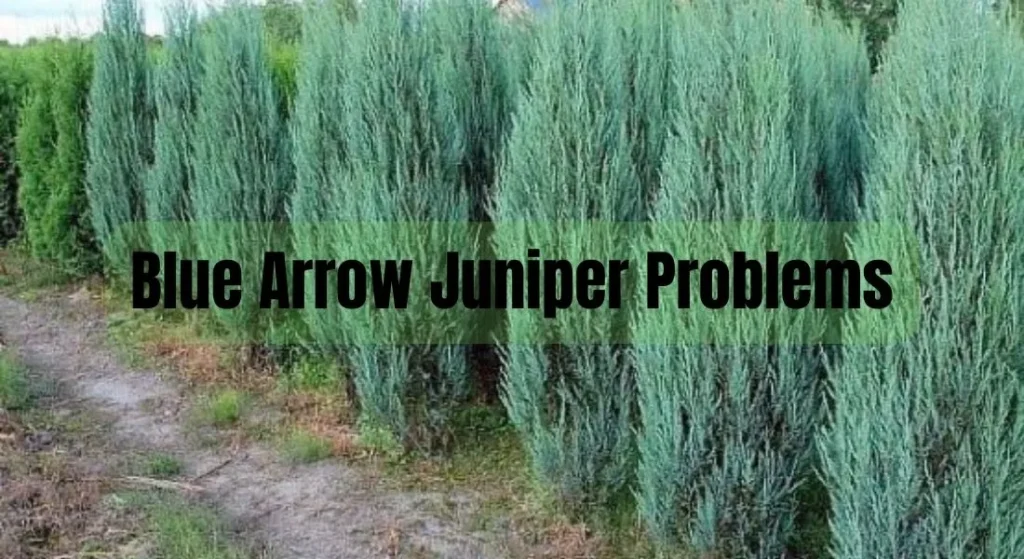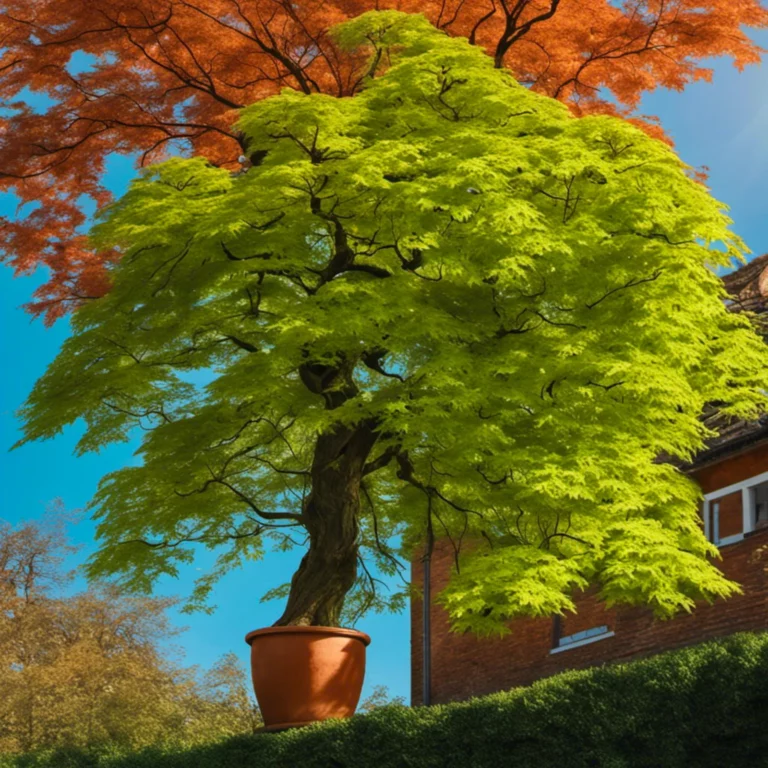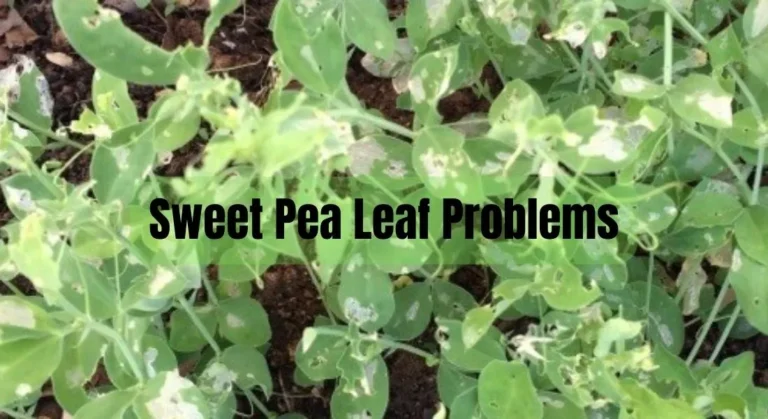Blue Arrow Juniper Problems: Common Issues and Solutions
Are you a proud owner of a Blue Arrow Juniper or planning to get one for your garden? These unique and elegant trees can add a touch of beauty to any landscape, but they are not immune to problems.
In fact, improper care can lead to serious issues such as snow damage and declining health. If you want to keep your Blue Arrow Juniper healthy and thriving, keep reading to learn about common problems and how to prevent them.

What is Blue Arrow Juniper?
Are you a fan of juniper trees and looking to add some color to your landscape? Look no further than the Blue Arrow Juniper. This narrow, columnar evergreen is a popular choice for gardeners who want a unique and elegant tree that can thrive in small spaces.
But what makes this tree so special? Its stunning blue-green foliage and silvery berries make it a standout in any garden. However, like any plant, the Blue Arrow Juniper is not immune to problems.
Read on to learn about common issues that gardeners may encounter and how to prevent them. And, as a fellow juniper enthusiast, I can attest to the beauty and charm of this tree – but also the importance of proper care to keep it healthy and thriving.
Blue Arrow Juniper Problems
Blue Arrow Juniper is a popular landscaping plant that can add beauty and privacy to your garden. However, like any other plant, it can face problems that may affect its growth and appearance.
In this section, we will discuss the common issues with Blue Arrow Juniper, how to identify them, and ways to prevent them.
Common Issues with Blue Arrow Juniper
Here are some of the common problems that Blue Arrow Juniper may face:
- Spider mites: These tiny pests can cause discoloration and webbing on the plant. They can be identified by the presence of small dots on the leaves and stems.
- Diseases: Blue Arrow Juniper can be susceptible to fungal diseases, such as cedar-apple rust and juniper blight, which can cause yellowing and browning of the foliage.
- Winter damage: The plant’s narrow form can make it vulnerable to snow and ice damage, which can cause broken branches and deformities.
Identifying Blue Arrow Juniper Problems
To identify problems with your Blue Arrow Juniper, you need to pay attention to its appearance and behavior. Here are some signs that may indicate a problem:
- Discoloration: If you notice yellowing or browning of the foliage, it may indicate a pest or disease problem.
- Wilting: If the plant looks wilted and droopy, it may be suffering from a lack of water or root rot.
- Deformities: If the plant has broken branches or a misshapen form, it may have suffered from winter damage.
Preventing Blue Arrow Juniper Problems
Preventing problems with your Blue Arrow Juniper is the best way to ensure its health and longevity. Here are some tips to prevent common problems:
- Proper watering: Blue Arrow Juniper prefers well-drained soil and should be watered deeply once a week during the growing season.
- Regular pruning: Pruning can help maintain the plant’s shape and remove any damaged or diseased branches.
- Pest control: Regular inspection and treatment for pests can prevent infestations and damage to the plant.
- Winter protection: Covering the plant with burlap or a protective wrap can prevent winter damage.
- Rust: If you notice rust on your Blue Arrow Juniper, you can treat it with a fungicide. Make sure to follow the instructions carefully.
- Spider mites: If you notice spider mites on your Blue Arrow Juniper, you can spray it with a strong blast of water to dislodge them. You can also use an insecticidal soap to kill them.
- Wilt: If your Blue Arrow Juniper is wilting, it could be a sign of root rot. Make sure the soil is well-draining, and avoid overwatering.
How to Care for Blue Arrow Juniper
Blue Arrow Juniper is a relatively low-maintenance plant, but it still needs some care to thrive. Here are some tips for taking care of your Blue Arrow Juniper:
- Soil: Blue Arrow Juniper prefers well-draining soil that’s slightly acidic. If your soil is too alkaline, you can add sulfur to lower the pH.
- Water: Blue Arrow Juniper doesn’t need a lot of water, especially once it’s established. Water deeply once a week during the growing season, and less frequently in the winter.
- Sunlight: Blue Arrow Juniper needs full sun to thrive. Make sure it’s planted in a spot that gets at least six hours of direct sunlight per day.
- Fertilizer: Blue Arrow Juniper doesn’t need a lot of fertilizer, but you can give it a boost in the spring with a slow-release, balanced fertilizer.
- Pruning: Blue Arrow Juniper doesn’t need much pruning, but you can shape it in the spring if you want to. Avoid pruning in the fall, as it can stimulate new growth that won’t have time to harden off before winter.
What are the Benefits of Blue Arrow Juniper?
Blue Arrow Juniper is a beautiful plant that can add a lot to your landscape. Here are some of the benefits of growing Blue Arrow Juniper:
- Low maintenance: Blue Arrow Juniper is a relatively low-maintenance plant that doesn’t need a lot of water or fertilizer.
- Evergreen: Blue Arrow Juniper is an evergreen plant, which means it will retain its foliage all year round. This can add some much-needed color to your landscape during the winter months.
- Vertical interest: Blue Arrow Juniper has a narrow, upright growth habit that can add some vertical interest to your landscape. It’s a great choice for small spaces or as a focal point in your garden.
Can Blue Arrow Juniper be Grown in Containers?
Yes, Blue Arrow Juniper can be grown in containers, but it’s important to choose the right size container and soil. Here are some tips for growing Blue Arrow Juniper in containers:
- Container size: Choose a container that’s at least twice the size of the root ball of your Blue Arrow Juniper.
- Soil: Use a well-draining soil mix that’s designed for container plants. Avoid using garden soil, as it can become compacted in the container.
- Watering: Water your Blue Arrow Juniper deeply once a week, and make sure the soil is well-draining. Avoid overwatering, as this can lead to root rot.
- Fertilizer: Use a slow-release, balanced fertilizer in the spring to give your Blue Arrow Juniper a boost.
FAQs
If you’re having problems with your Blue Arrow Juniper, you’re not alone. Many homeowners struggle to keep these beautiful trees healthy and green. Here are some frequently asked questions about Blue Arrow Juniper problems.
What causes Blue Arrow Juniper to turn brown?
There are several reasons why your Blue Arrow Juniper might be turning brown. One common cause is spider mites, which can cause the needles to turn brown and fall off. Another common cause is overwatering, which can lead to root rot and other fungal diseases. In some cases, the tree may simply be getting too much sun or not enough water.
To prevent your Blue Arrow Juniper from turning brown, make sure to keep it well-watered but not overwatered. Also, make sure to provide it with plenty of shade during the hottest parts of the day. If you suspect that your tree has a fungal infection or spider mites, you may need to use a fungicide or pesticide to treat the problem.
How often should Blue Arrow Juniper be watered?
Blue Arrow Junipers are relatively drought-tolerant, but they still need to be watered regularly. During the summer months, you should water your tree at least once a week, and possibly more often if the weather is particularly hot and dry. During the winter months, you can reduce the frequency of watering to once every two to three weeks.
When watering your Blue Arrow Juniper, make sure to give it a deep watering, so that the water reaches the roots. You should also make sure to water the tree early in the morning or late in the evening, when the sun is not as strong.
What is the best time to prune Blue Arrow Juniper?
The best time to prune your Blue Arrow Juniper is in the early spring, just before new growth begins. This will give the tree plenty of time to recover from the pruning before the hot summer months arrive. When pruning your tree, make sure to use clean, sharp pruning shears to avoid damaging the branches.
When pruning your Blue Arrow Juniper, focus on removing any dead or damaged branches, as well as any branches that are crossing or rubbing against each other. You should also thin out the tree by removing some of the interior branches, which will help to improve air circulation and reduce the risk of fungal infections.
Conclusion
In summary, the Blue Arrow Juniper is a stunning and hardy tree that can add a touch of elegance to any garden. But like any plant, it’s important to be aware of common problems and take action to prevent them.
From spider mites to winter damage, there are steps you can take to keep your juniper healthy and thriving. And the payoff is worth it – with its unique shape and striking blue-green foliage, the Blue Arrow Juniper is sure to be a standout in your landscape.
So don’t let these common issues scare you away – with proper care and attention, your Blue Arrow Juniper can be a source of beauty and enjoyment for years to come.
Related Posts:





